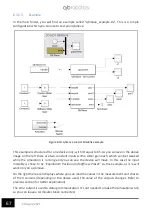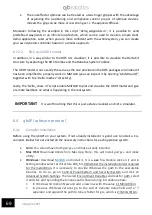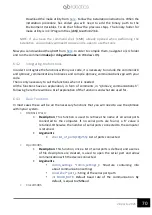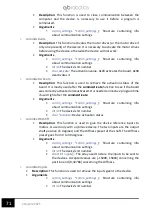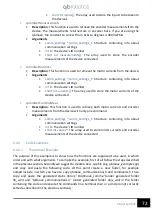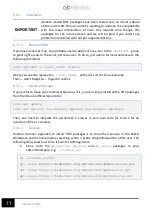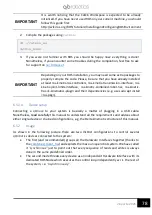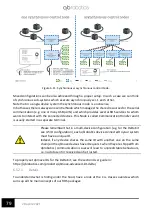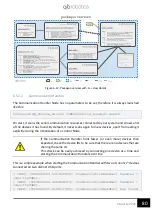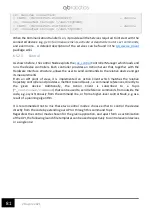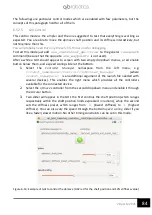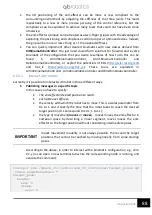
79
28 aprile 2021
Figure 6-11: Synchronous vs asynchronous control mode.
Mixed configurations can be also achieved through a proper setup. In such a case we can think
of synchronous sub-systems which execute asynchronously w.r.t. each other.
Note that in a single-device system the synchronous mode is a nonsense.
In both cases there is always one central Node which manages the shared resources for the serial
communication (e.g. one or many USB ports) and which provides several ROS services to whom
wants to interact with the connected devices. This Node is called
Communication Handler
and it
is usually started in a separate terminal.
Please remember that in a multi-device configuration (e.g. for the Delta Kit
see 4.5 ID configuration), each qbrobotics device connected to your system
must have a unique ID.
Indeed, if any device shares the same ID with another one on the same
chain (all the qbmove devices have ID equals 1 when they are shipped from
qbrobotics) communication issues will lead to unpredictable behaviours,
i.e. no data sent or received can be trusted.
To properly set qbmove IDs for the Delta Kit, see the section User guide in:
https://qbrobotics.com/products/qbmove-advanced-kit-delta/
6.5.2.1
Details
To understand what is hiding under the hood, have a look at the C++ classes overview which
sums up all the main concepts of our ROS packages:
Summary of Contents for qbmove Advanced Kit
Page 2: ...www qbrobotics com ...
Page 15: ...12 28 aprile 2021 Figure 3 7 Snap on mechanism Figure 3 8 Examples of connection ...
Page 40: ...37 28 aprile 2021 ...
Page 63: ...60 28 aprile 2021 IMPORTANT Remember to power the qbmove or the chain before using it ...
Page 97: ...94 28 aprile 2021 This page was intentionally left blank ...



